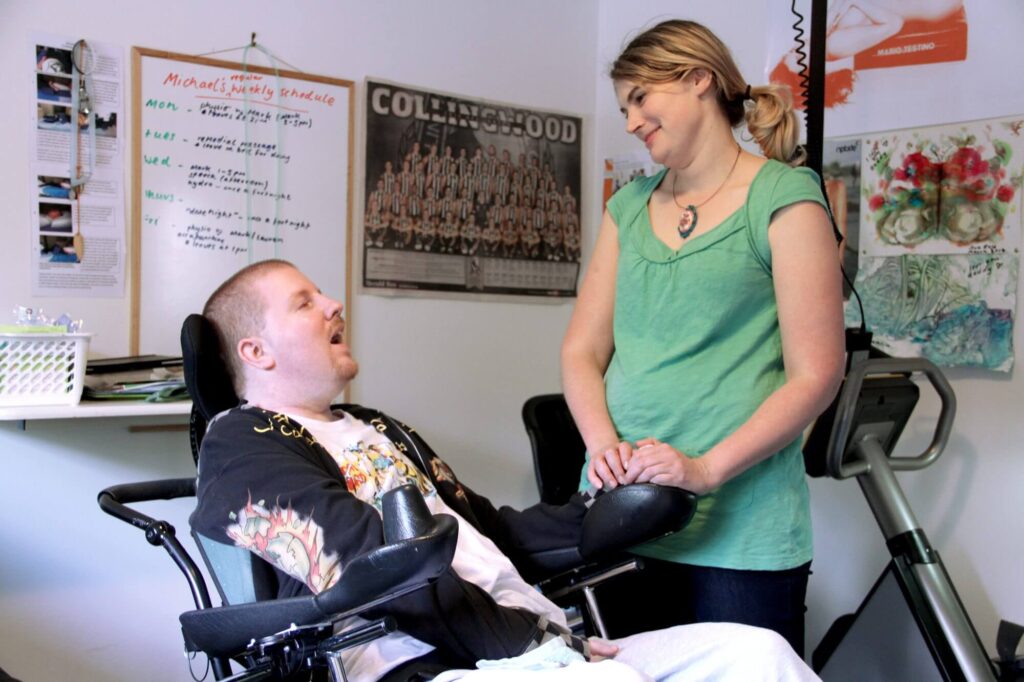
Introduction
The National Disability Insurance Scheme (NDIS) helps people with disabilities, their families, and carers. The Australian, state, and territory governments all share responsibility for its governance and funding. It is intended to replace the previous system of disability care and support established by the National Disability Agreement.
Under The NDIS – the participants under 65 years of age with a permanent and significant disability can avail full funding for ‘reasonable and necessary support” required due to their disability. The participants decide on where and when they seek services, and the intervention is directly given to them or their guardians, with no means-testing or buying insurance taking place.
The scheme operates independently of the Disability Support Pension and Medicare, focusing solely on disability supports rather than healthcare. The term “insurance” in NDIS refers to its proactive use of insurance principles to ensure long-term financial sustainability. Additionally, the scheme previously funded ‘information, linkages, and capacity building’ (ILC) programs until mid-2020, when they were transferred to the Department of Social Services.
Historical Context
Not immediately after their founding, the states and territories began operating asylums and other facilities for disabled persons, imitating the prevalent treatment paradigm in the United Kingdom. These institutions were often big and residential.
The Commonwealth “Invalid and Old-Age Pensions Act 1908” established a “Invalid Pension” for those who were “permanently incapacitated for work” and could not be supported by their families, as long as they met racial and other criteria. This gave users money to spend on their care and assistance.The Curtin government established the “Vocational Training Scheme for Invalid Pensioners” in 1941. This provided occupational therapy and other linked services to those who were not permanently disabled in order to assist them find work. This organization changed its name to the Commonwealth Rehabilitation Service in 1948, and its work continued.
During the 1970s, in Australia, care for people with severe disabilities transitioned from institutionalization to community care. In 1974, Gough Whitlam suggested a national disability insurance program similar to the one established in New Zealand that year. According to academic Donna McDonald, Treasurer Bill Hayden encouraged Whitlam to focus on the implementation of Medicare instead.
In 2006, Bruce Bonyhady, head of Yooralla, met with former Labor cabinet minister Brian Howe, who introduced him to the Disability Investment Group. The Disability Investment Group submitted an impartial submission to the Australia 2020 Summit in 2008. They subsequently submitted their recommendations to the Productivity Commission. In 2011, the Productivity Commission issued a study on the subject, stating that disability in Australia “was framed as an economic issue, rather than a social issue”.
Establishment of the NDIS
The National Disability Insurance Scheme (NDIS) was introduced in Australia with the passing of the National Disability Insurance Scheme Act 2013, following the introduction of the bill into Federal Parliament by then-Prime Minister Julia Gillard in November 2012. This marked a significant step towards providing comprehensive support for people with disabilities.
Initially known as “DisabilityCare Australia,” the NDIS began its rollout in July 2013, starting in specific regions such as South Australia, Tasmania, and the Hunter Region in New South Wales. The Australian federal budget allocated $14.3 billion to the NDIS, funded through a 0.5% increase in the Medicare levy.
Despite the ambitious goals of the NDIS, challenges arose in its implementation. Issues such as funding constraints, workforce capacity, and operational efficiency surfaced, prompting ongoing evaluation and feedback mechanisms. The NDIS Citizens’ Jury Scorecard project between 2014 and 2015 sought to assess the scheme’s effectiveness in achieving its objectives.
Changes in governance and funding occurred in subsequent years, with the Abbott government making significant alterations to the board of the National Disability Insurance Agency (NDIA) responsible for implementing the NDIS. This included appointing new board members with diverse backgrounds in various corporate sectors.
However, budgetary challenges and policy changes posed hurdles to the NDIS’s sustainability. The 2016 Australian federal budget aimed to generate savings for the NDIS fund by reassessing Disability Support Pension recipients’ capacity to work and cutting compensation for the carbon pricing scheme. These measures sparked concerns about the scheme’s long-term viability and accessibility.
National Rollout
The NDIS eventually started its nationwide roll out on July 1, 2016, and promised a holistic support and care to the people living with disabilities in every part of Australia. Nevertheless, NDIS leadership shifted in rapidly once the CEO, David Bowen resigned in March 2017, and then the former Bankwest CEO, Rob De Luca, was elected in November 2017.
In April 2018 advocacy organisations including People with Disability Australia, registered their anxieties concerning NDIA’s choice of Serco to run the contact centres of Melbourne and regional Victoria for two years. Being the first point of the client’s, Serco’s experience of being disabled raised questions and concern in the members of the disability community.
The presence and impact of NDIS also became more significant and were perceived in regional areas and labeled as a separate driver of economy, by the Financial Review, but The Flinders University Study also showed that half of all NDIS participants either had their support level lowered or experienced no change, which points out the difficulties arising in the implementation as well as delivery of the scheme.
The budgetary allocation and the legal issues were then identified as the main challenges for the NDIS. In 2018, the NDIA set the first $10 million for the legal assistance mainly directed at preventing the appeals for more funding, and a significant part of them being misplaced. Also, the brand constructed a virtual assistant named “Nadia”, voiced by actress Cate Blanchett, in order to improve the user experience and make it easier to work with NDIS services.
As of June 2019, nearly 300,000 people with disabilities were being supported by the NDIS, reflecting its broad impact and reach. However, the introduction of independent assessments for NDIS participants over the age of 7 in 2021 sparked controversy and concern among disability advocates. While the Coalition government was committed to implementing independent assessments, they faced opposition and were eventually put on hold in April 2021, with full abandonment following further lobbying efforts in July 2021.
Despite the NDIS’s significant reach, its coverage was limited, with approximately 85% of people with disabilities in Australia not covered by the scheme as of April 2022. This was partly attributed to age restrictions, with individuals over 65 not eligible for NDIS support, highlighting ongoing challenges in achieving comprehensive disability support nationwide.
